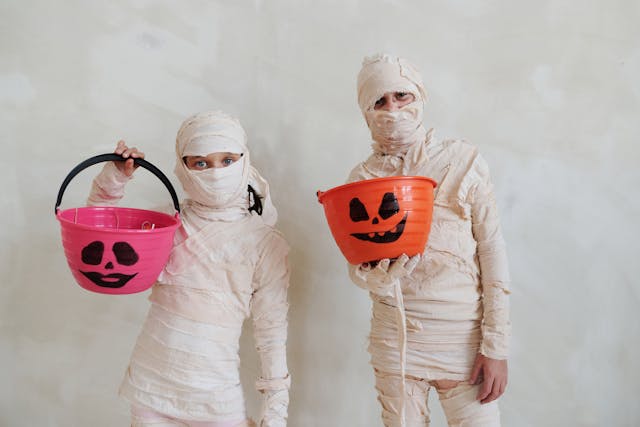Halloween is an exciting time for children, filled with fun costumes, spooky decorations, and of course, bags full of candy. However, parents should remain vigilant when it comes to inspecting the treats their kids bring home, even though tampering with candy is a rare case. Checking Halloween candy isn’t about being overprotective; it’s about ensuring your children enjoy their candy safely.

Below are some important tips for parents to follow when sorting through Halloween candy:
Examine Candy for Tampering
The first thing parents should do is examine each piece of candy for signs of tampering. Look out for:
- Torn wrappers
- Loose or broken seals
- Pinholes or puncture marks
- Any unusual discoloration
If you find any candy that looks like it may have been opened or tampered with, it’s best to discard it. Safety experts advise against consuming any candy that looks suspicious or has been unwrapped.
Check for Choking Hazards
For younger children, certain types of candy can be a choking hazard. Hard candies, gumballs, and small toys often found in treat bags should be kept away from toddlers and preschoolers. Parents should take the time to sort out these potential dangers, ensuring their little ones enjoy treats that are appropriate for their age.
Avoid Homemade Treats
Unless you know the source personally, it’s best to avoid homemade treats like cookies, brownies, or cupcakes. These might be delicious, but they also carry a higher risk of contamination or tampering if they come from unknown individuals. Stick to store-bought, pre-packaged treats for peace of mind.
Read the Labels for Allergens
For children with food allergies, Halloween can be a particularly tricky time. Many candies contain common allergens like peanuts, tree nuts, milk, soy, and gluten. Be sure to carefully read the ingredient labels on packaged treats before letting your child dig in. If you’re unsure about a particular treat, it’s safer to set it aside.
Inspect Non-Candy Items
Halloween treat bags aren’t limited to just candy. Sometimes, they may contain small toys, stickers, or novelty items. If your child receives non-edible items, check to ensure they’re appropriate for their age and free of small parts that could be swallowed. Some novelty items like glow sticks may also contain harmful chemicals, so it’s a good idea to screen these before allowing children to play with them. If your child has been injured, consult with a Buffalo personal injury lawyer so you can know your rights and eligibility for compensation.
Be Wary of Foreign Objects
Over the years, there have been reports of foreign objects being found in Halloween candy, including needles, razor blades, or shards of glass. Although such instances are rare, it’s essential to be cautious. As part of your inspection, gently squeeze each piece of candy to detect any unusual hardness or objects inside. If anything feels off, toss it out immediately.
Be Mindful of Expired Candy
Sometimes, households may hand out candy from previous holidays or leftover stock that could be expired. Check the expiration dates on candy packaging and discard anything that is past its date. Expired candy can taste bad or become unsafe to eat, especially if it has been stored improperly.
Limit Candy Consumption
After ensuring that all the candy is safe, it’s important to set boundaries on how much candy your child consumes. Eating too much candy in one sitting can lead to upset stomachs, cavities, and other health issues. Consider allowing a few pieces each day or trading some candy for healthier treats to maintain balance.
Sort Together with Your Child
Make candy inspection a fun activity that you do together. Involving your child in sorting their Halloween treats can help teach them valuable lessons about food safety and moderation. Plus, it gives you an extra set of eyes to help spot any potential dangers. Set up a sorting station after trick-or-treating where you both can go through the haul together and ensure it’s safe to eat.
Understanding the Risks of Halloween Candy
Taking these steps to check Halloween candy will ensure that your child’s trick-or-treating experience is both enjoyable and safe. By being cautious and aware, you can help protect your child from potential dangers while still allowing them to indulge in the holiday fun. Remember, it’s always better to be safe than sorry, so take the extra time to examine your child’s candy haul before they dig in.
















Add Your Comment